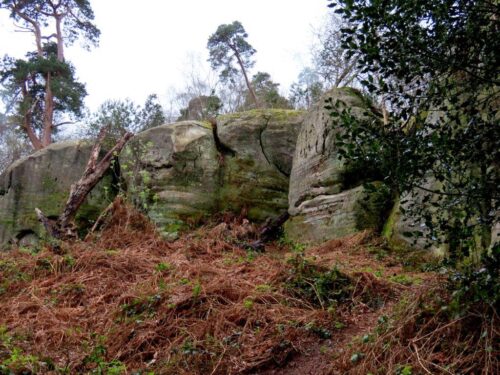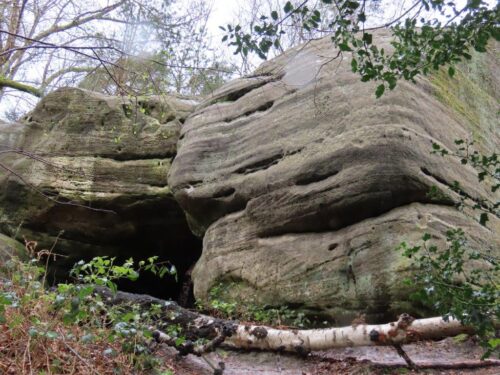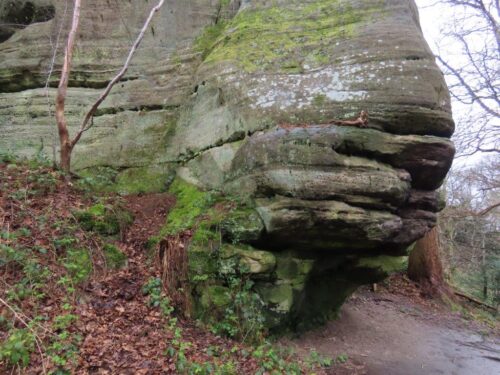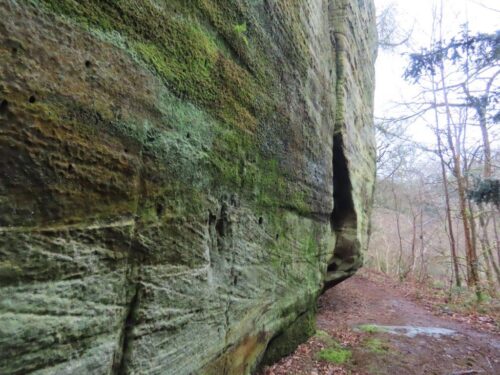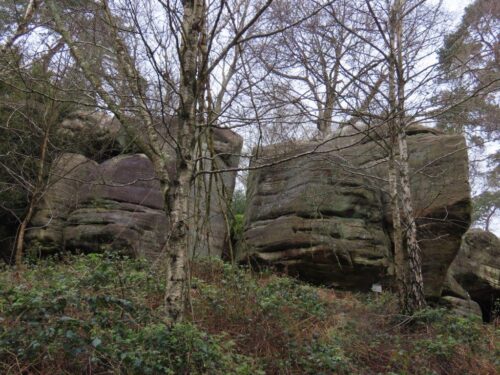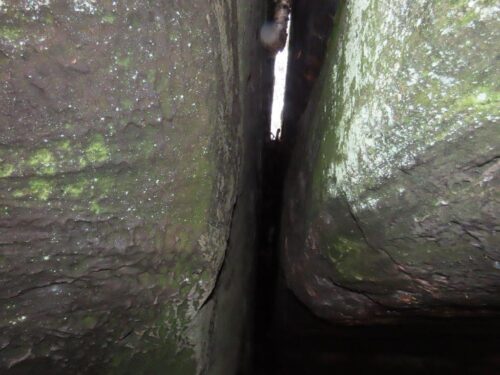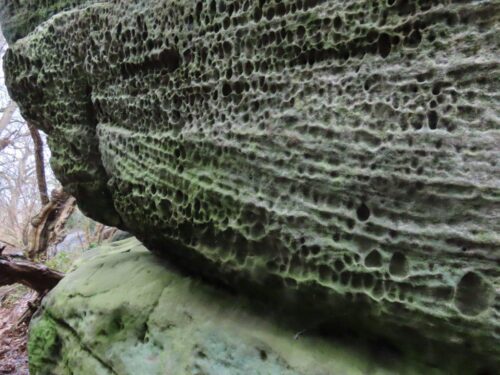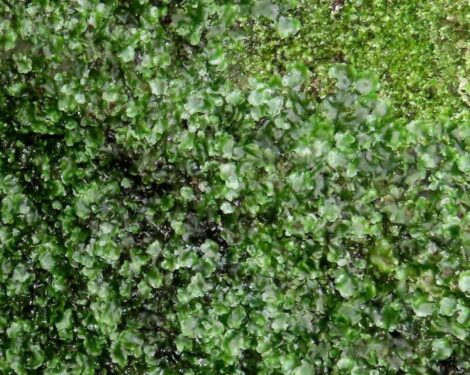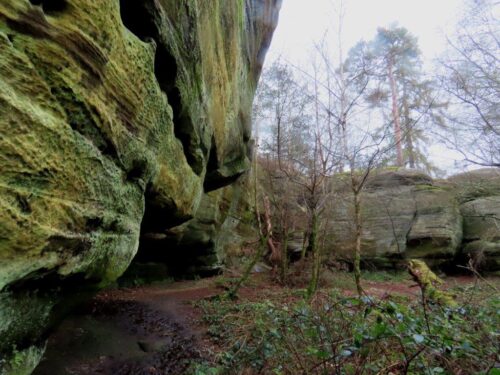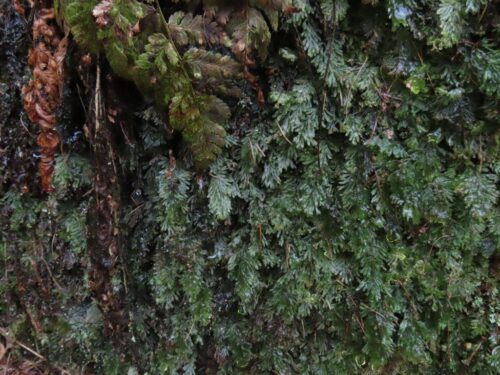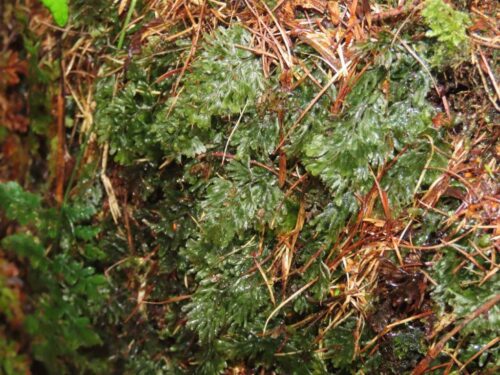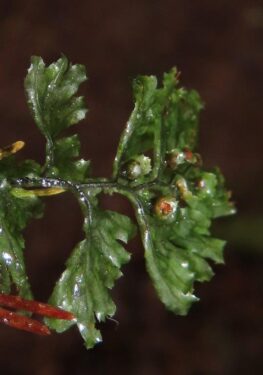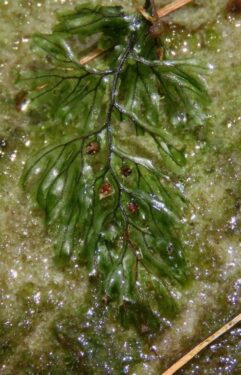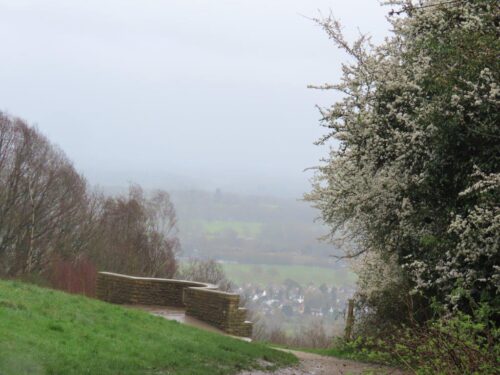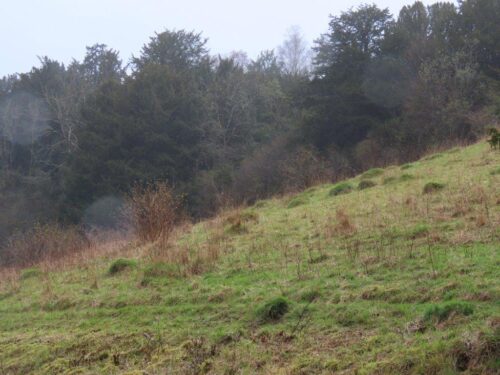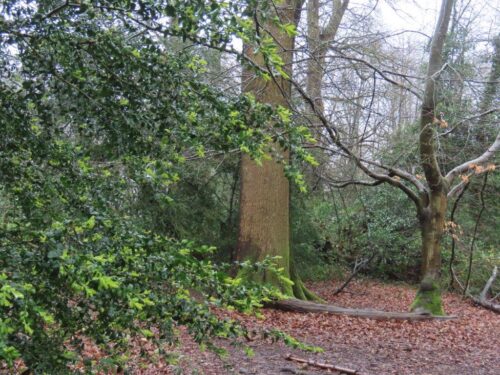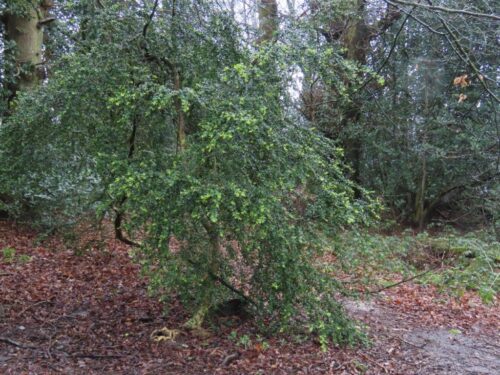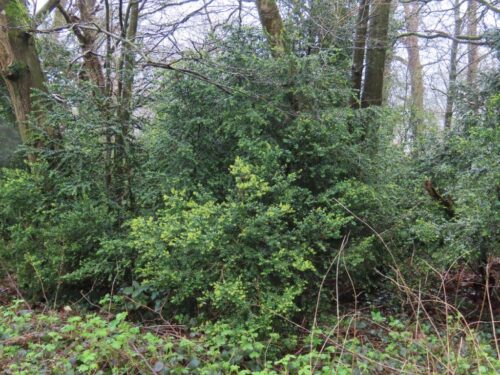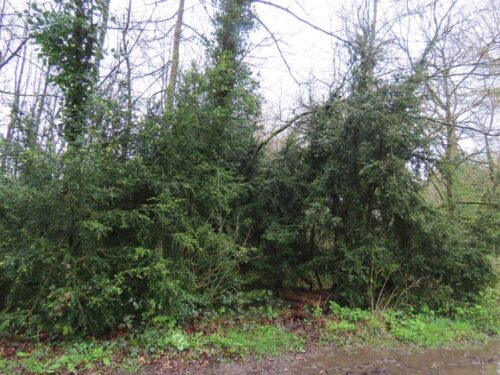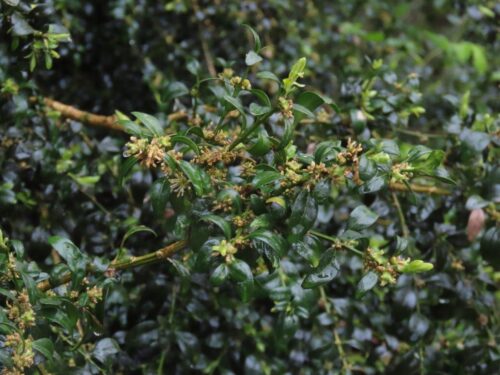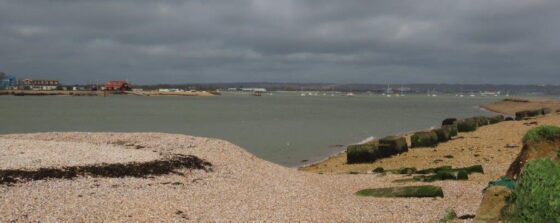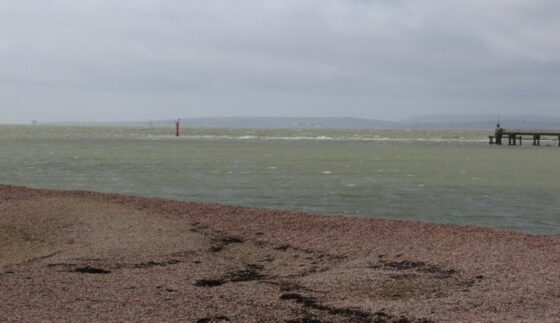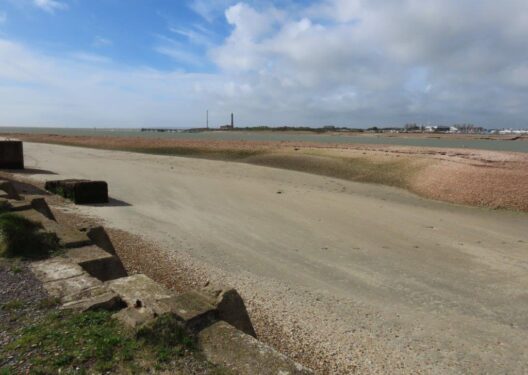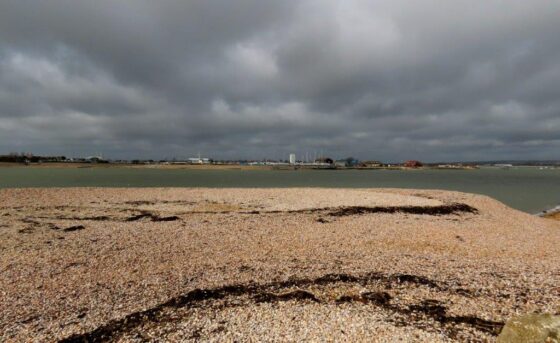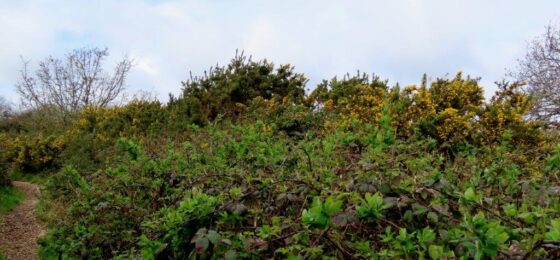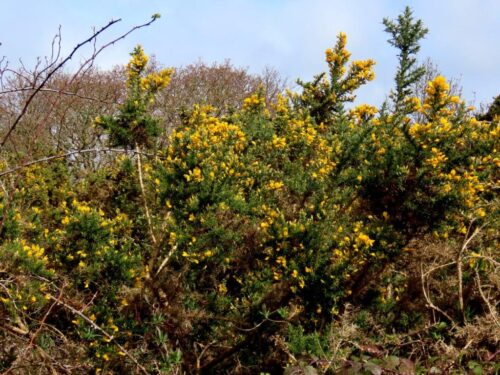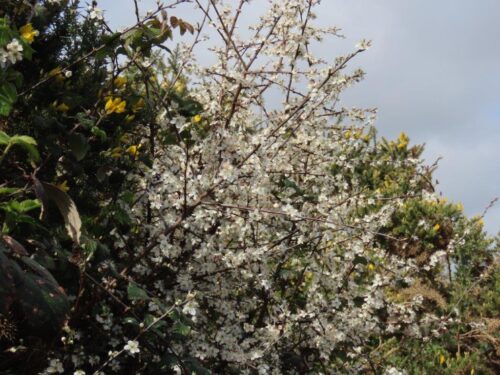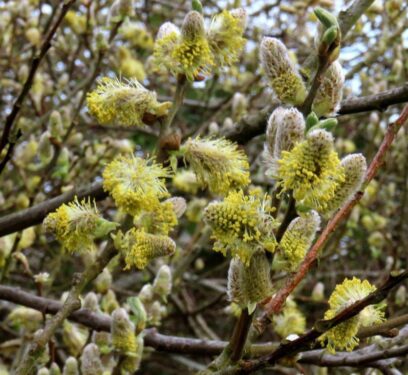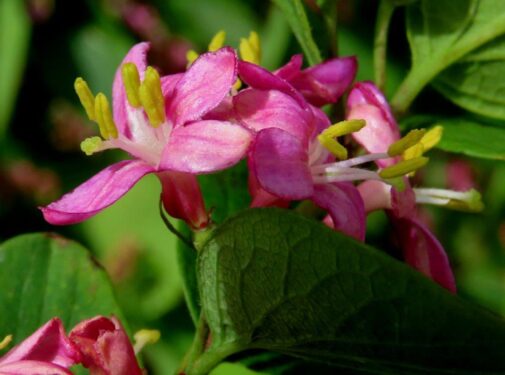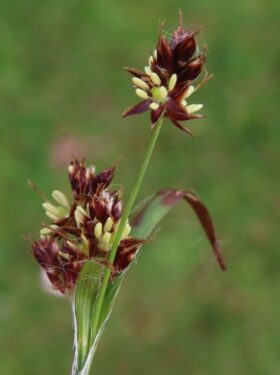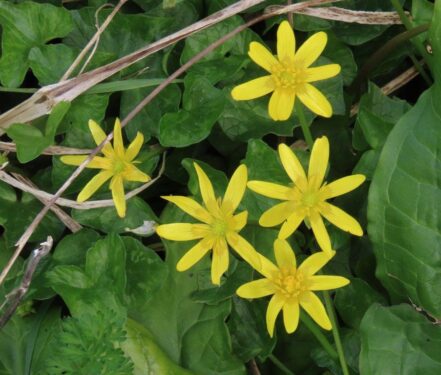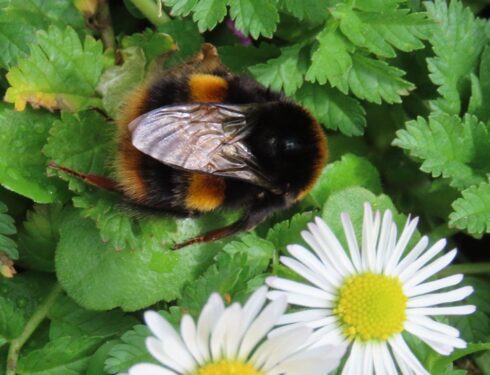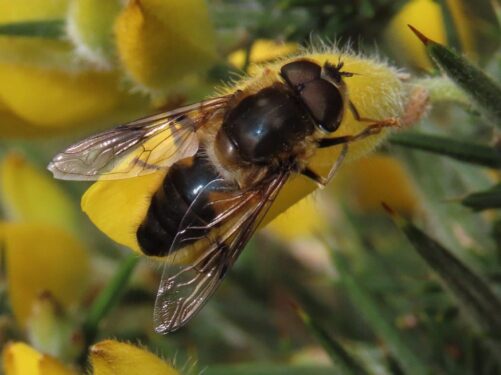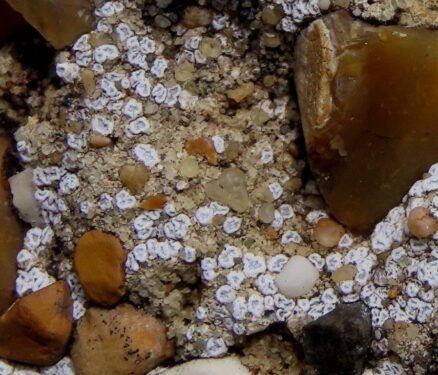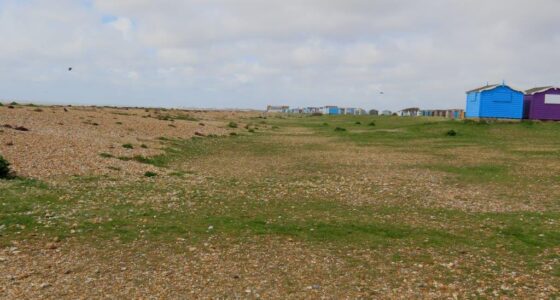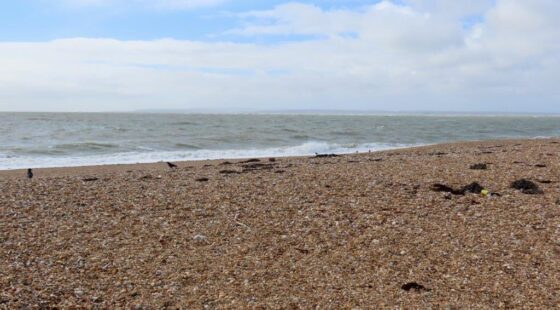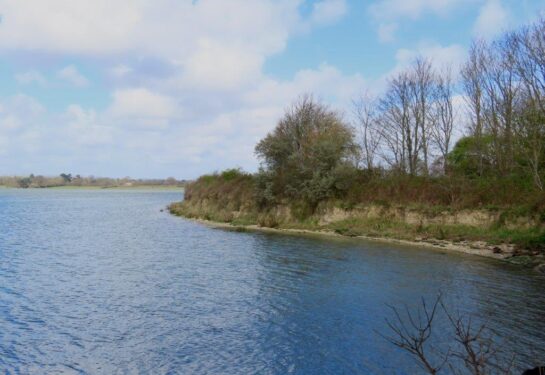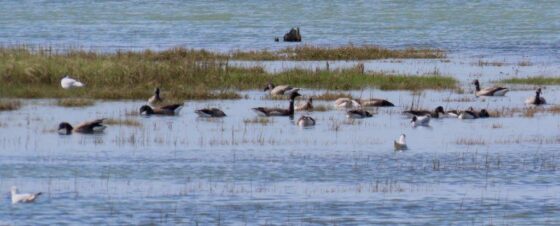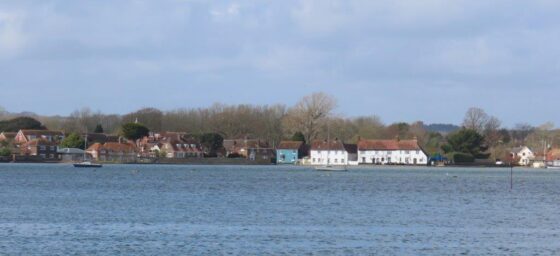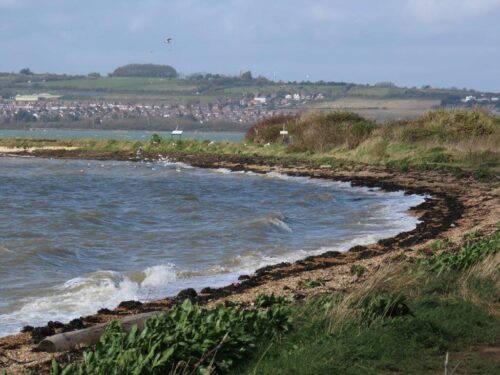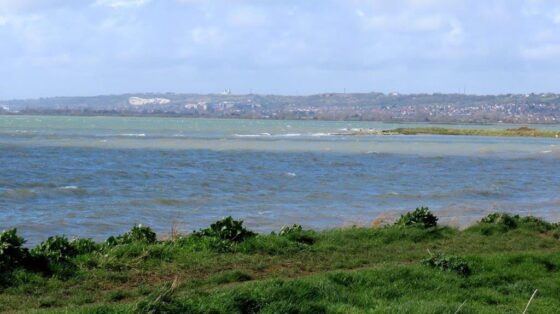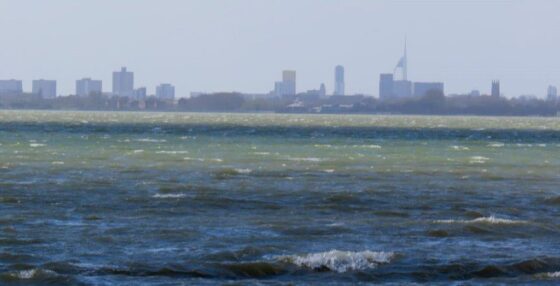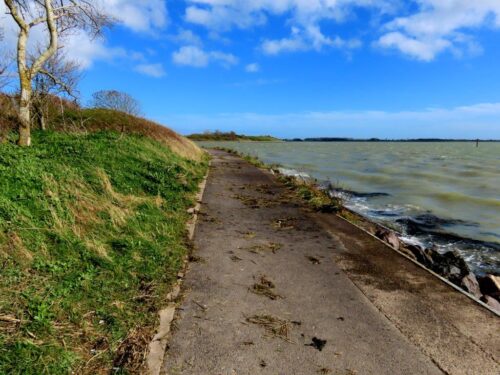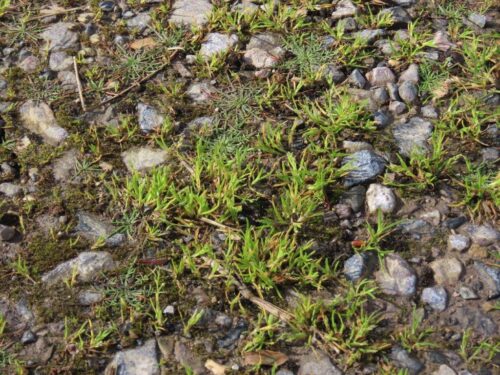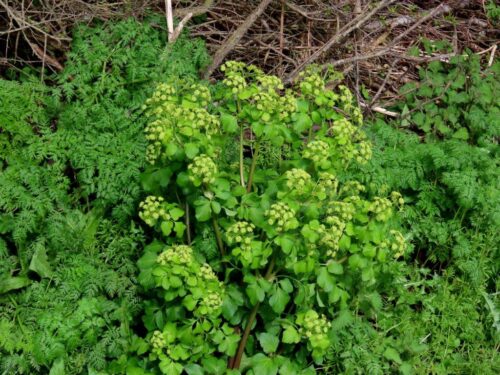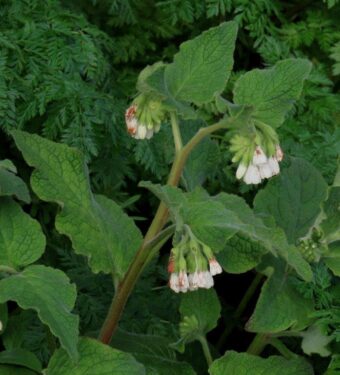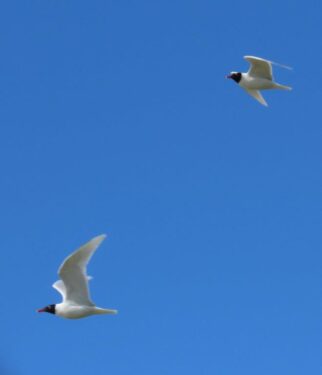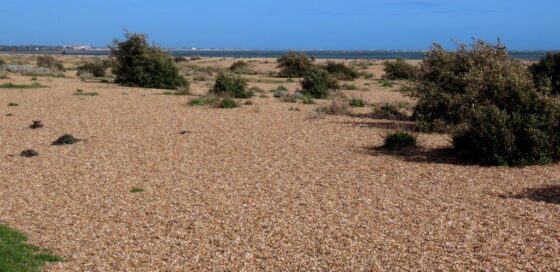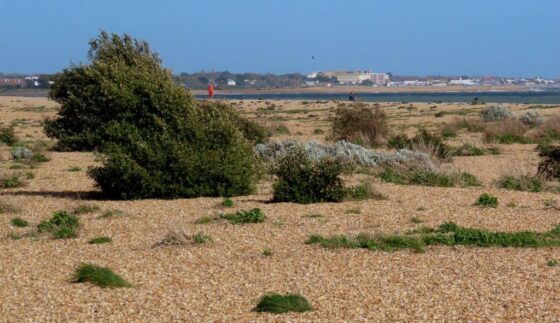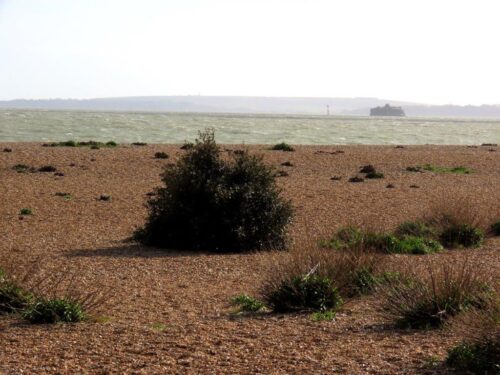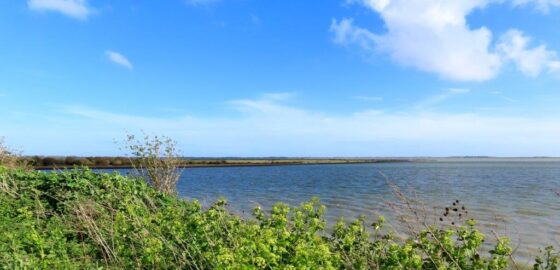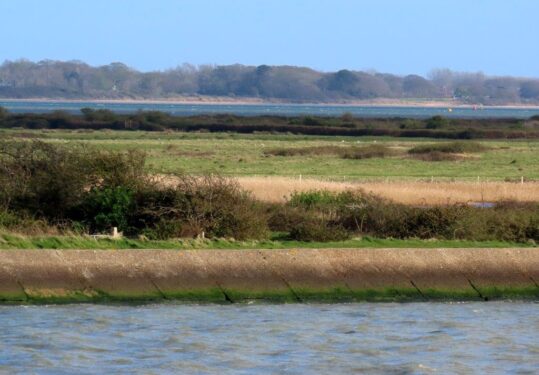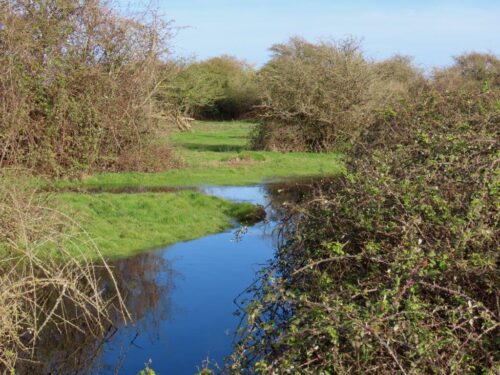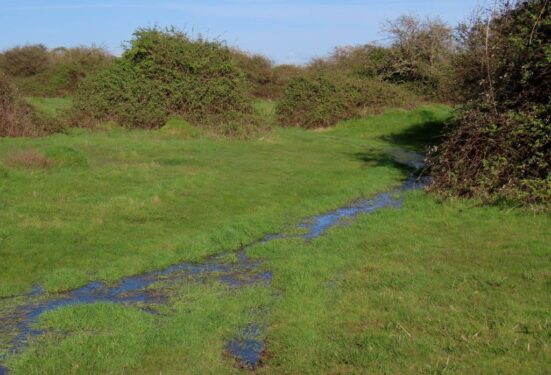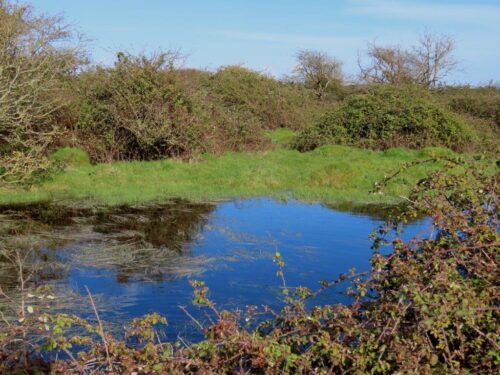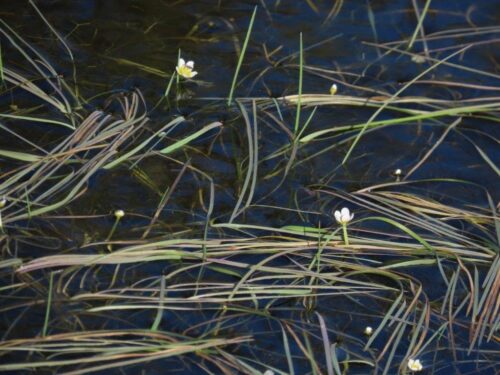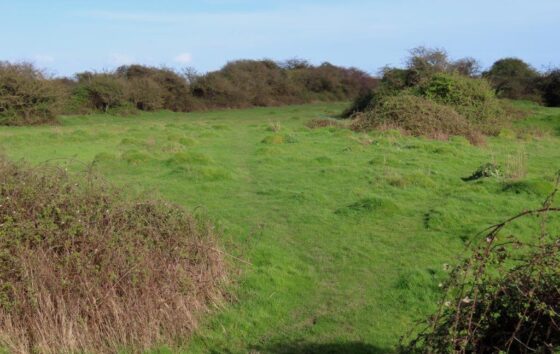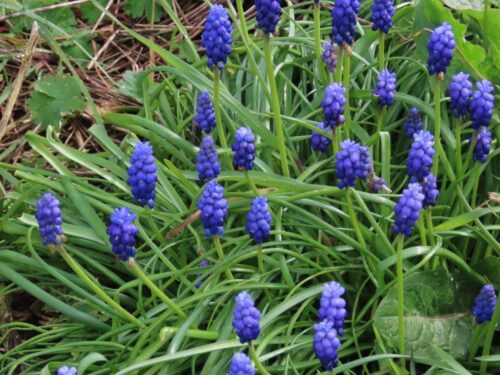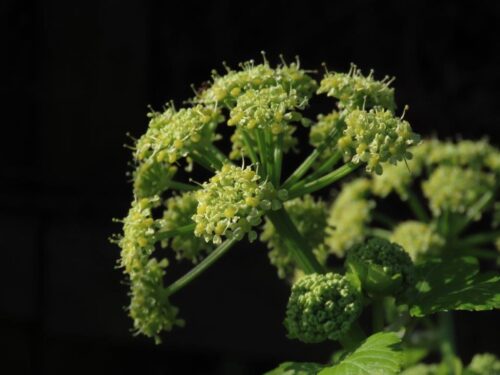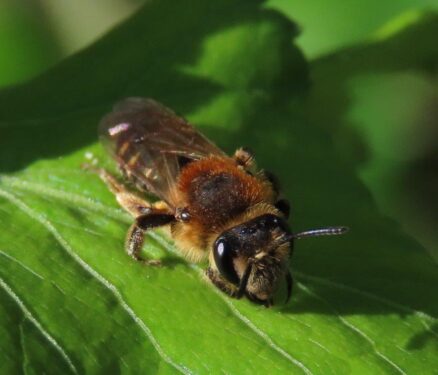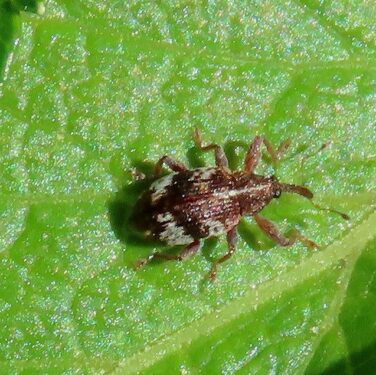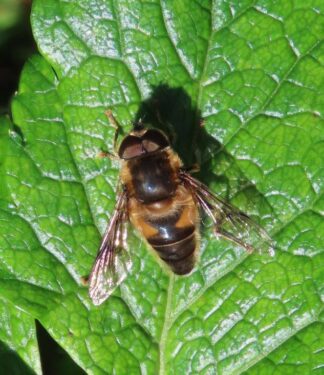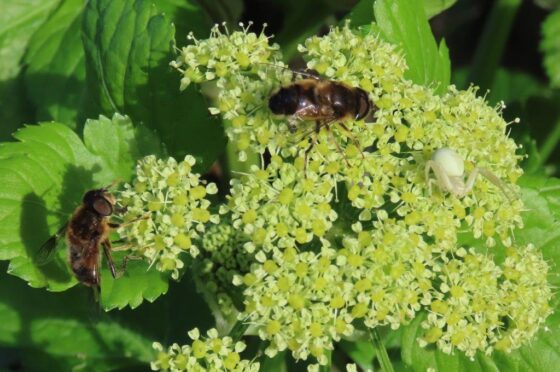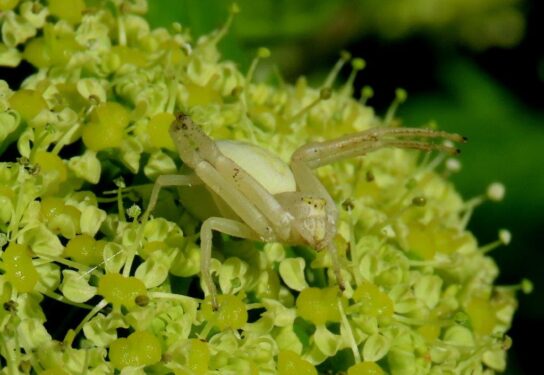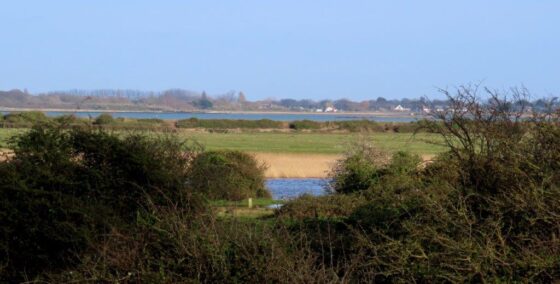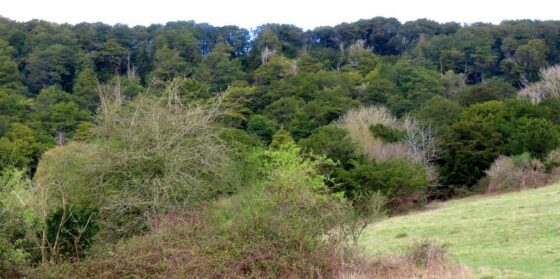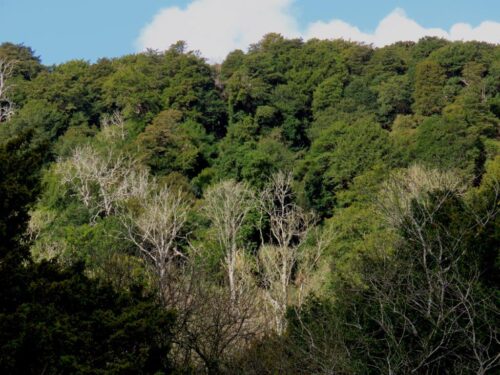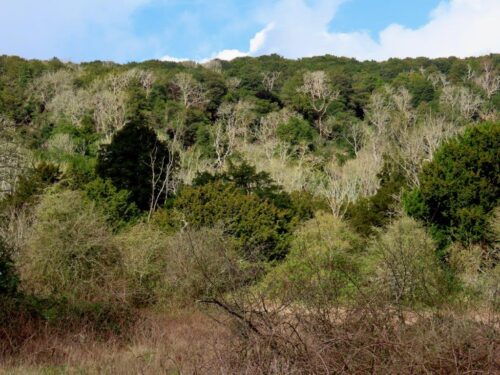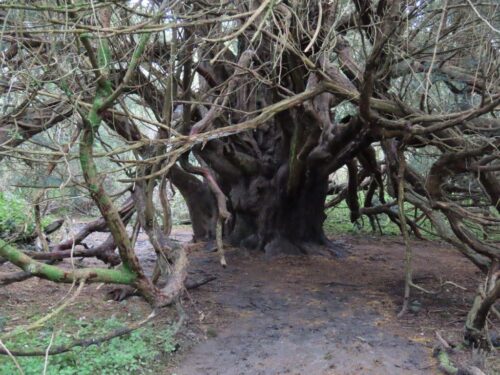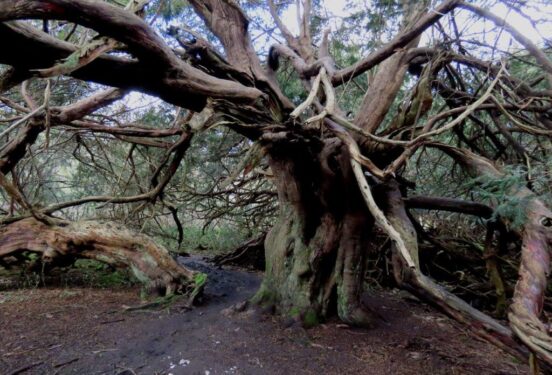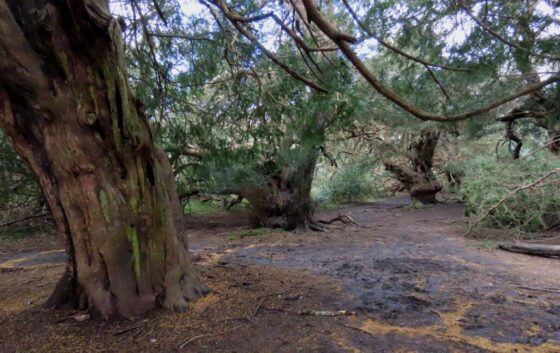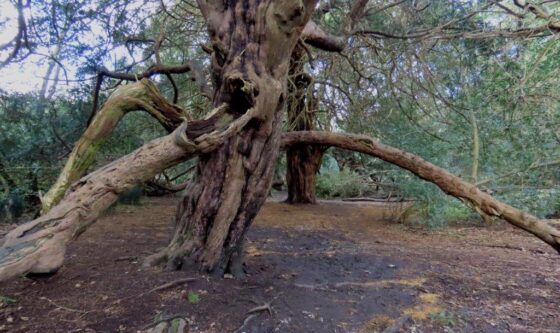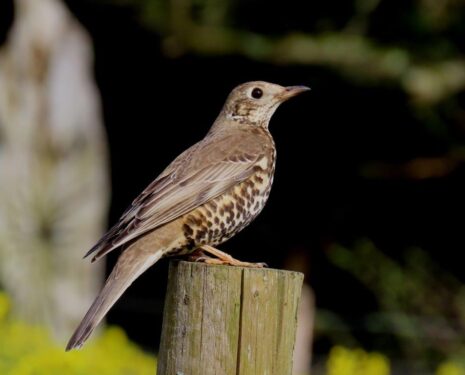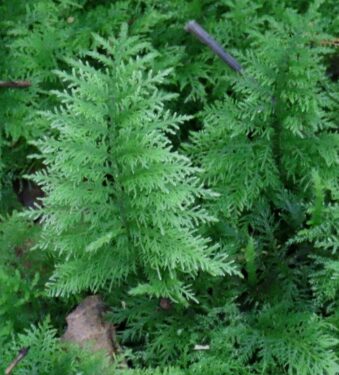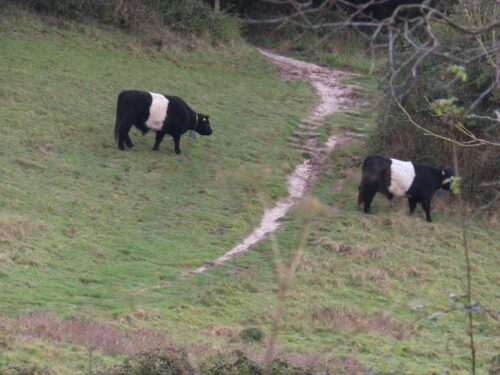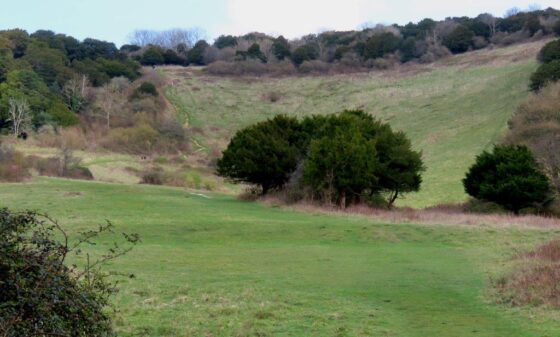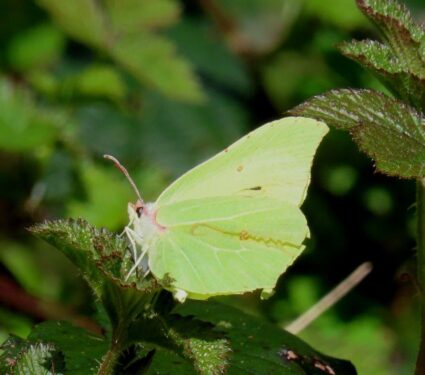Away from my usual haunts for a couple of days, I ventured south of the Thames…
I was first introduced to the surprising sandstone outcrops of the Weald last summer in the grounds of Wakehurst Place – see blog here. When the chance came again to head south of the Thames last week I resolved to seek out more of these geological features, and headed to the Sussex Wildlife Trust reserve of Eridge Rocks, just south of Tunbridge Wells.
I was not disappointed! The rock bastions here are even more impressive, set amongst extensive Beech and Holly woods from which (thankfully) Rhododendron thickets are now being cleared.
Massive outcrops, up to 10 metres tall, of 135 million-year-old rocks forming an extensive ridge, they are in places smooth, in others with honeycomb erosion features. They were simply magnificent, despite the gloomy and windy weather, and fittingly dripping with water in the rainy conditions, being an eastern enclave of temperate rain forest, otherwise more characteristic of the western fringes of our isles.
Luxuriant carpets of mosses and liverworts cascaded down the faces …
… and I managed to find both of my target ferns, both new to me. There were some patches underneath overhangs and deep in shady crevices, well out of photo-reach, of the moss-/alga-like gametophyte generation of Killarney Fern, a plant that is now turning up in this form much more widely than the flaccid, ferny sporophyte generation, a real rarity of the Atlantic fringes.
And then tucked away at the foot of north-facing cliffs, the real prize – Tunbridge Filmy-fern, first found in these parts in the late 17th Century but sadly depleted by the Victoria fern-collecting mania. The main patch covered maybe half a square metre, and the fronds were showing the spore-producing structures. It was worth getting wet and muddy for, even if the unremitting gloom and rain were not really conducive to photography.
Next stop, some 40km to the west was Box Hill, under the care of the National Trust. I am assured the views are magnificent but low cloud and rain meant that the best I could do was to walk among the dripping Box and Yew woodland, with Whitebeam just bursting into leaf.
First time I have been here since the early 1980s, it was a damp but enticing experience, and left me wanting more….
But by now, while the rain was dying away into (heavy) showers, the wind was ferocious. The top of a hill was not the place to be so time to head to my hotel in Havant.
———————————————————————————————————————–
The second day dawned drizzly though before too long the sun came out and, despite the still strong onshore wind, it got quite warm, at least in shelter. It was a day around the estuaries and marshes between Chichester and Portsmouth, all very familiar to one from Essex.
First onto Hayling Island, and out to the western end at Sinah Beach, with views across to Portsmouth and the Isle of Wight. And the Beach Café for a most welcome egg-and-bacon bap! The wind was crashing the waves against the more exposed shingle shores, with few birds to be seen and certainly no insects.
Moving east onto the Sinah Common, I found some shelter among the Gorse, Blackthorn and Sallow shingle heath, also with lots of Honeysuckle (it must be a glorious sight and smell in summer) plus a non-native relative Lonicera tatarica, the first time I have seen this eastern Asian bush growing in the wild in Britain.
Lesser Celandine, Heath Wood-rush and Common Stork’s-bill were in bloom, some attracting attention from bumblebees and hoverflies taking advantage of some shelter from the wind, while the old military installations had an array of lichens.
The shingle continued eastwards, fronting Hayling, and here the feel of Essex was very real, almost like Jaywick, a place I know well.
Around the back of the island, in sheltered bays, Brent Geese were feeding on the marsh fringes…
… except along the shore of Hayling Island nature reserve where the windsurfers were out in force.
Back on the mainland, Langstone Harbour produced Early Meadow-grass, acid green among the other grasses, while White Comfrey and Alexanders clothed the verges. And Mediterranean Gulls yowling everywhere!
Round on the next peninsula at Southsea, the shingle beach was being colonised by salt-pruned Holm Oaks, growing happily alongside truly maritime plants like Sea Beet.
And lastly for today, to Farlington Marshes, the mix of grazing marsh and estuary feeling especially like Essex, with the added ‘delight’ of the very busy road alongside… yes, it was Good Friday, but this whole area does seem terribly busy and noisy.
There was Thread-leaved Water-crowfoot flowering in the shallow marsh pools, while the higher ground had numerous anthills, and the mature scrub hid singing Song Thrush and Cetti’s Warblers.
Alongside the paths, Spanish/Hybrid Bluebells and Garden Grape-hyacinths provided colour and a resource for bumblebees, while Alexanders, here more sheltered, was feeding solitary bees, a well-marked small weevil Anthonomus pedicularius, and lots of hoverflies (mostly Eristalis pertinax), with a White Crab-spider waiting in vain for one to get too close…
And finally to Kingley Vale, a National Nature Reserve on the downs inland of Chichester.
One of THE classic British wildlife sites, its most impressive feature (among many) is the almost primeval Yew woodland, with trees hundreds of years old clothing the chalk slopes.
Old and gnarled, the Yews should be the home of goblins and fairies, although all I noticed were the wood-sprites (singing Goldcrests) and a obliging Mistle Thrush among the sun-dappled forest, with frondy mosses like Thuidium tamariscinum clothing the floor…
Buzzards mewed over the Belted Galloway cattle brought in to maintain the rich grassland flora of the open slopes, albeit too early in the season for much to be in flower…
And as the temperature rose, at 1030 the threshold was crossed for the emergence of a host of sparkling Brimstones.
And so it was time to head home, past the town of Arundel, its cathedral magnificent in the by now glorious sunshine (an idea here for another trip, another time). Across the flooded plains of Pulborough Brooks, and through the wooded lanes between moss-coated high banks of the South Downs: homeward bound….past Box Hill which today ironically was bathed in the glow of the setting sun, the bronze-tinged Box trees clinging to the steep slopes above the River Mole. But no time to detour: Box Hill will always be there for another sunny day!
